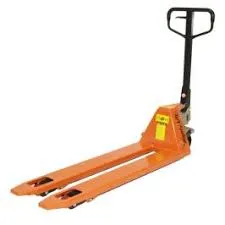


Safe Use of Chain Blocks Ensuring Efficiency and Safety in Lifting Operations
Chain blocks, also known as chain hoists, are essential tools in various industrial and construction settings for lifting heavy loads. While they are invaluable for improving productivity and efficiency, their proper and safe use is paramount to prevent accidents and ensure the safety of operators and surrounding workers. This article will explore best practices for the safe use of chain blocks, highlighting essential precautions, operational guidelines, and maintenance tips.
Understanding Chain Blocks
Chain blocks function by utilizing a chain and gear system to lift heavy objects upward, allowing for the movement of materials in an efficient manner. Their design often incorporates a hand-operated chain that, when pulled, engages gears to lift the load. Chain blocks come in varying capacities and designs, making them suitable for different lifting applications. However, the specifics of operation and safety measures can vary significantly between different models and types of chain blocks.
Safety Precautions Before Use
Prior to operatively engaging a chain block, it is crucial to observe several safety precautions
1. Inspect the Equipment Before each use, thoroughly inspect the chain block for any signs of wear, damage, or malfunction. Check the chains for kinks or rust, and ensure that the hook is not deformed or cracked. Any defective equipment should be reported and taken out of service until repaired.
2. Verify Load Capacity Always check the load capacity of the chain block being used. Exceeding its rated capacity can lead to catastrophic failures, resulting in dropped loads and injuries. Operators must understand the weight of the object being lifted and confirm that it is within the chain block’s specifications.
3. Appropriate Setup Ensure that the chain block is securely and correctly mounted to a stable beam or structure capable of supporting the intended load. The chain should hang freely without any obstructions. Properly securing the load to prevent shifting is essential.
Safe Operating Practices
When operating a chain block, adhering to established safety practices is vital

1. Clear the Area Before lifting any load, ensure that the area is clear of personnel and obstacles. Communicate clearly with everyone in the vicinity about the lifting operation to ensure no one is endangered by moving loads.
2. Use Proper Lifting Techniques Always lift loads vertically and avoid side-to-side movements. This reduces the risk of the load swinging or tipping, which can lead to accidents.
3. Power and Control In case of powered chain blocks, familiarize yourself with the control mechanisms. Operate the hoist slowly and steadily, ensuring you maintain control throughout the lifting process.
4. Never Overreach Never attempt to lift an object that is beyond the capacity of the chain block or requires an unsafe position to achieve. It is always better to use multiple units for large loads rather than risking an accident.
Maintenance and Inspection
Regular maintenance of chain blocks is critical for their longevity and safe operation. Implementing a routine inspection schedule can aid in identifying potential issues before they escalate into safety hazards
1. Lubrication Periodically lubricate the moving parts of the chain block to reduce friction and wear.
2. Chain Inspection Regularly check the chains for signs of stretching, wear, or damage. If any irregularities are detected, replace the chain immediately.
3. Professional Servicing It is advisable to have chain blocks serviced by qualified professionals at regular intervals to ensure compliance with safety standards.
Conclusion
The safe use of chain blocks is a combination of proper equipment choice, diligent inspections, strict adherence to operating procedures, and ongoing maintenance. By following these guidelines, operators can maximize the efficiency of their lifting operations while minimizing the risk of accidents and injuries. Promoting a culture of safety in the workplace not only protects employees but also enhances overall productivity. Investing time and resources into proper training and equipment maintenance will yield significant benefits, ensuring that lifting operations remain both safe and effective.



